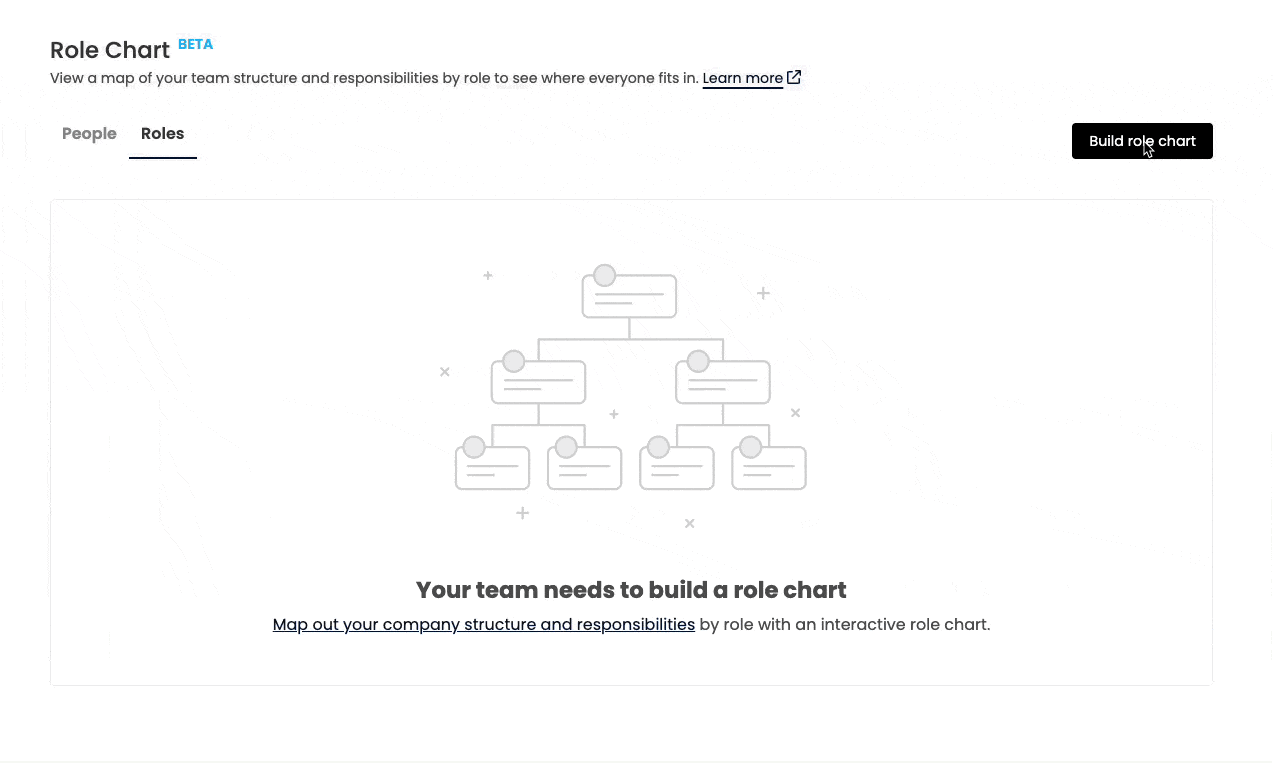The best ways to document roles and responsibilities (with free templates!)
July 5, 2023
Not everyone is pleased with Twitter’s new rate limit rules, so we can promise you now that there will never be a limit on the number of The Manual articles you can read per day.
Hot off the SMB press this week:
- Why it’s important to document roles and responsibilities in your growing business.
- A library of role templates to help you get started.
- How putting roles into a role chart sets you up for future success.
- Business acquisition could be your way to business scalability.
HOW TO BUILD A BUSINESS PLAYBOOK
Here’s why you need to document roles and responsibilities
When you first start your own business, things are (relatively) simple: You know everything that needs to be done and how to do it. Once you get enough business going, you hire one or two people, you teach them how to do a few of the things on your plate, and you take care of everything else.
But as you grow and hire more people, a lot of your responsibilities get taken up by others. And at a certain point, there’s so much going on that things can start falling through the cracks. You start to lose track of who’s in charge of what — and if you don’t know, there’s no way your team knows.

So, it’s time to start documenting the roles and responsibilities of everyone at your business, introduce accountability, and make sure every task is taken care of. Start by asking your employees to document everything they do and compare it to the tasks you believe they should be responsible for. Identify any gaps and delegate new responsibilities from there.
Want more tips? Then check out episode 5 of the “How To Build a Business Playbook” masterclass. You’ll find out the best way to deal with changing responsibilities during business growth and the importance of org charts and role charts — plus everything else you need to know about documenting your company roles.
👉 Access the full masterclass now.
STARTER PACK
Template(s) of the week: Roles

Well, you’ve just heard it straight from the business masterminds: Documenting roles and responsibilities is crucial to SMB growth and success. So it’s time to get started. And if you’re not sure how, you’ve come to the right place.
👉 Check out our entire archive of role templates — complete with role descriptions and role-based responsibilities for the positions in your small business. These starters are fully-built — ready for you to tweak as needed and share with your team.
Even cooler? You can copy and paste this content straight into Trainual, your one-stop-shop for employee need-to-knows. Once you’ve created roles in Trainual, you can use them to level up your employee orientation, training, and development. Here are just a few things you can do with roles in Trainual:
- Add roles to every employee, so they (and their peers) stay informed on what role-based responsibilities they own.
- Create interactive employee resources that keep your team up to date on who does what — like a role chart, org chart, and employee directory. (Psst… want to learn more about small business role charts? Jump to the next section!)
- Bulk-assign policies, processes, and company information to employees based on their roles, so they always have access to the information they need.
- And more! (Need a Trainual account? Try for free.)
P.S. Check out our other free, multimedia-enhanced, and customizable templates — including policy starters and process starters. Helping you build your business playbook that much faster.
I’M THE MAP
Does your team have role clarity? Here’s how to make sure they do.
Scary stat time! (You might want to brace yourself for this one.) Role clarity — or, an employee’s understanding of their own and their coworkers’ positions and responsibilities — is something only half of employees experience. Meaning, it’s safe to assume that the other half of your team has absolutely no idea what’s expected of them and who’s in charge of what.
Yikes. Please tell me there’s something I can do to fix this.
The answer to all your role clarity woes boils down to three words: the role chart. AKA the tool that maps out all the roles in your organization — who falls under each role, which roles report to each other, and what each role is responsible for — in a single snapshot.
When you create a role chart, you have an org chart-like resource with guaranteed spots for everyone — no matter how many hats they wear and how many people they report to. You can even use it to plan for future growth by adding roles that don’t exist yet.
Sold! So, how do I build a role chart?
Not to brag (okay, maybe we will for just a second…) but Trainual is the only business playbook-building software on the market with an in-app role chart builder — helping your whole team keep track of everyone’s contributions and the changes that happen in real-time.

👉 Does your business playbook still need a role chart? Leverage Trainual AI to build a complete map of role reporting structure — in seconds — using the in-app “Auto-generate role chart” button. Need a Trainual account? Try for free.
FOR SALE
Business acquisition: A pathway to scalable growth
Is that really an option for my small business?
Why not? When it comes to small business growth, here’s the overly simplified formula: Get more customers, increase revenue, hire more employees, find new ways to reach even more customers — rinse and repeat.
And there are a lot of different ways to find new customers — business acquisition included. When you acquire the right businesses that are in-line with your mission and vision, you can open yourself up to new market opportunities and broaden your product and service offerings without added work on your part. That will help you expand your customer base and lead to more growth.
Okay, but where do I even start?
It all starts with some due diligence. Business acquisition comes with risks — there are legal, regulatory, and compliance issues that can come into play — and it’s expensive. You’re buying a whole ‘nother business, so you want to be sure you’re making the best choice.
That means finding the right business to buy. (Yes, this is Captain Obvious speaking, but bear with us.) You need a business that isn’t just complementary to your own products and services — you need to ensure that their values and culture are similar (if not the same) as your own, too.
Consider making acquisitions of companies you’ve partnered with in the past — that way, you know first-hand what it’s like working with them and whether they have the right culture for a potential merge.
Then you’ll want a comprehensive view of their revenue engine, along with their overall business health, the potential for growth, and the gaps that an acquisition would present.
👉 Find out more about the acquisition process.
TL; DR
This week's highlight reel
- In a rich (wo)man’s world. Passion Collective is awarding quarterly grants to women looking to explore their professional passions. Applicants will receive a $1.5K cash grant, along with coaching and free access to Passion Collective’s events and other resources. Apply before July 21 to make it into this application cycle.
- Partners? Partners. Amazon is tapping small businesses to join their new Hub Delivery Partner program. Small businesses in 23 states can earn up to $27K per year delivering packages for the online shopping behemoth. The company is starting small — with 2.5K partners — and interested businesses can apply now.
- Delivery! DoorDash will now allow drivers to choose between being paid per order or by a flat hourly wage. The company hopes this gives drivers more decision-making power and incentivizes them to pick up smaller orders. Which means we may now receive our $4 coffee orders while they’re still hot.
- Uh-oh. Alabama-based Cam’s Lemonade — which started as a lemonade stand by an eight-year-old entrepreneur-to-be and his mother — recently ran into some trouble with the state’s Department of Labor for offering an apprenticeship meant to empower other children. But despite the setback, the business continues to thrive, proving you can still turn sour lemons into lemonade.




